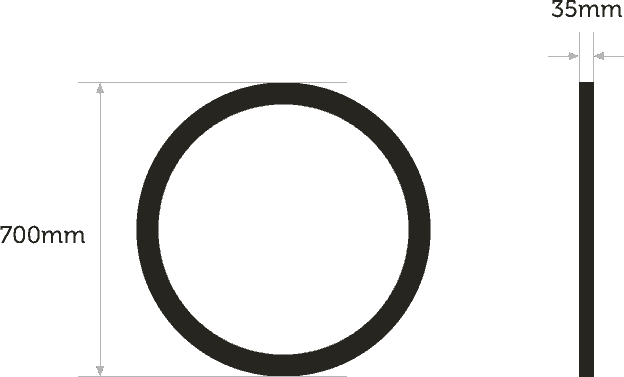When it comes to changing the tires of your bicycles or customizing the rims of your wheels with stickers, it is essential to know the units of measure for bicycle tires.
Likewise, in Proadhesive, to be able to design the stickers for rims of bicycle of each cyclist, it is essential for us to know the measurements of their tires or, more specifically, the measurements of their rims.
To define the measurements of a rim, you must first choose the bike tire measurement unit that you want to use and there are several possibilities:
- The anglo-saxon.
- The french.
- The ETRTO.
At Proadhesive, we have opted for the ETRTO as it is the standardized unit at European level and recognized worldwide to indicate the dimensions of any type of tire.
Next, we will try to explain the differences between each of these bicycle tire sizes.
European unit of measurement ETRTO
The ETRTO unit of measure is expressed in millimeters. It is a unit of measurement standardized at European level and recognized worldwide when indicating tire dimensions. The standard is governed by the European Tyre and Rim Technical Organisation, whose abbreviation corresponds to ETHRO.
This standard uses two numbers represented in the XX-XXX format, for example 35-622. Each number refers to the following:
- The section of the tire, that is, its width (with the inflated wheel) in millimeters.
- The inside diameter of the tire in millimeters.
For example, a 35–622 tire will be 35mm wide and 622mm inside diameter.

ETRTO bicycle tire measurement unit
The ETRTO unit of measurement is the reference when choosing any type of tire.
It is important to note that the ETRTO diameter corresponds to the inner diameter of the tire, as well as the outer diameter of the rim of your bicycle. For this reason it is especially important when choosing which stickers fit the rims of your bicycle. To do this, you must also know the profile of your rims, that is, the distance between the outer and inner diameter of your rims expressed in millimeters.
French unit of measure
The french unit of measure is expressed in millimeters. It is commonly used to designate the dimensions of road bike tires. It is expressed in XXXxXXX format, for example, 700x35C, which corresponds to the following:
- Outside diameter of the tire in millimeters.
- Tire section in millimeters.

French bicycle tire unit of measure
Unlike the ETRTO unit of measure, the French unit of measure defines the outside diameter of the tyre, that is, it includes the distance between the rim and the tread and therefore said diameter will always be greater than the diameter of the tyre. outside of the rim.
The French unit of measurement is not standardized and the dimensions of bicycle tires can vary from one brand to another, so it is not very reliable. A 700×25 road bike tire from a certain brand may be narrower than a 700×25 racing tire from another brand.
Anglo-Saxon unit of measure
The anglo-saxon unit of measurement is commonly used to define the measurements of MTB (Mountain Bike) tires. It is expressed in inches and according to the XXxX,XX format, for example 24×1.75, which corresponds to the following:
- Outside diameter of the tire in inches.
- Tire section in inches.

Anglo-Saxon bicycle tire unit of measure
As can be seen in the previous image, like the French unit of measure, the Anglo-Saxon unit of measure defines the outer diameter of the tire but in inches, which will always be greater than the outer diameter of the rim.
The Anglo-Saxon unit of measurement is also not standardized, so the measurements of the tires can vary from one brand to another and, therefore, it is not too precise or reliable and can lead to confusion. For example, tires with a diameter of 559mm (MTB), 571mm (triathlon) and 590mm (Dutch type bicycle) are all considered as 26″ tyres. Another example would be 622mm and 635mm tires which are both considered as 28″ tires.
Finally and as an example, a 35–622 tire according to the ETRTO measure and another 700–35 according to the French measure are the same, the typical road bike tire. The first gives the inside diameter of the cover and the second the outside.

